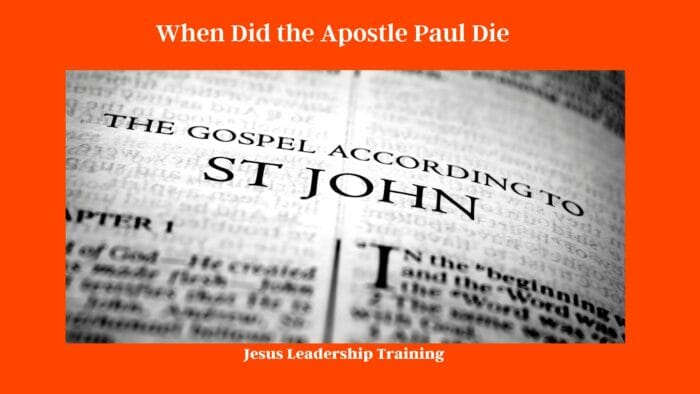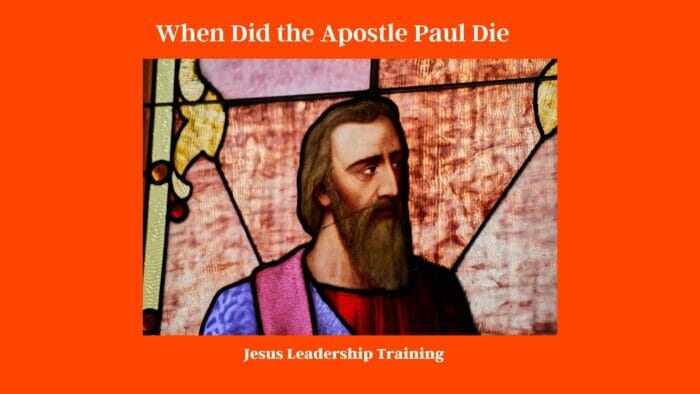Unravel the mystery of ‘who wrote John in the Bible’. Explore the various theories and historical evidence that shine light on this intriguing biblical question. Join us on a journey into the past, that stretches from the early days of Christianity to modern biblical scholarship.
Table of Contents
Who Wrote John in the Bible: A Deep Dive into Authorship and Context
“In the beginning was the Word, and the Word was with God, and the Word was God.” – John 1:1. One of the most profound and moving statements in the New Testament, it comes from the Book of John. But who wrote John in the Bible? This question has piqued the interest of scholars, theologians, and laypeople alike. We’ll examine this question, weighing the evidence, examining theories, and exploring the history surrounding this enigmatic gospel.
The Gospel of John: An Overview
The Unique Fourth Gospel
The Gospel of John, the last of the four gospels, stands apart from its synoptic companions—Matthew, Mark, and Luke—in style and content. It’s less a chronological narrative and more a theological reflection on the life, death, and resurrection of Jesus Christ. The Gospel of John delves into Jesus’s divine nature, presenting a different perspective on the Savior’s teachings and miracles.

The Time and Place of Writing
Estimates for the time of writing the Gospel of John range from the late first century to the early second century A.D. It’s generally agreed that the gospel was likely penned in Ephesus, a major city in ancient Asia Minor, now modern-day Turkey.
Unraveling the Mystery: How Many Apostles Did Jesus Have | Jesus | Disciples | Christ
The Traditional View: John the Apostle
Early Church Tradition
Who wrote John in the Bible? For centuries, the answer was straightforward: John the Apostle, one of the twelve original disciples of Jesus Christ. Early church tradition holds John as the author, with Irenaeus, bishop of Lyon in the late second century, being one of the first to assert this claim.
Internal Evidence from the Gospel
Some clues within the Gospel itself point towards John the Apostle as the author. The writer refers to himself as “the disciple whom Jesus loved,” leading many to believe this is John, who’s depicted in other parts of the New Testament as being particularly close to Jesus.
The Johannine Community: A Counterargument
The Role of the Community
However, not all scholars agree with the traditional view. Some argue the Gospel of John was written not by a single individual but by a community of followers—referred to as the Johannine community—that developed its unique understanding and interpretation of Jesus’s life and teachings over time.

Evidence of Multiple Authors
Certain elements within the Gospel, such as shifts in style and contradictions in narrative, suggest that multiple authors may have been involved in its composition. This strengthens the theory of a Johannine community.
The Role of the Beloved Disciple (Wrote)
Certainly, here’s a table detailing the key roles of the Apostle John, also known as the ‘Beloved Disciple’:
| Role | Details |
|---|---|
| Disciple of Jesus | John was one of the original twelve apostles chosen by Jesus to follow Him and to be His close associates. He, along with Peter and James, formed the inner circle of Jesus’s disciples and were present during specific significant events, such as the transfiguration of Jesus and Jesus’ agony in the garden of Gethsemane. |
| Witness to Crucifixion | As the ‘Beloved Disciple,’ John is traditionally believed to have been the only one of the Twelve Apostles who did not forsake Jesus in His hour of need and stood by Jesus at the foot of the cross during His crucifixion. |
| Caretaker of Mary | Before His death, Jesus entrusted the care of His mother, Mary, to John, an act seen as a testament to His trust and love for the apostle. |
| Evangelist | After Jesus’s ascension, John played a crucial role in spreading the gospel and establishing the early Christian church. He is traditionally seen as a pillar of the Jerusalem church and later appears to have worked in Ephesus. |
| Author of New Testament Works | John is traditionally attributed with the authorship of five books of the New Testament: The Gospel of John, three epistles (1, 2, and 3 John), and the Book of Revelation. These works have been pivotal in understanding Jesus’s nature, ministry, and teachings. |
| Visionary | John is identified as the recipient of the divine visions recorded in the Book of Revelation, the last book of the New Testament. These visions form a significant part of Christian eschatology. |
| Exile to Patmos | According to tradition, John was exiled to the island of Patmos during a time of persecution under Roman Emperor Domitian. Here he received the visions that he recorded in the Book of Revelation. |
| Death | John is traditionally believed to have died of natural causes in Ephesus, making him the only apostle not to be martyred. |

Please remember, while these roles are widely accepted, they are based on traditional Christian beliefs and interpretations of the Bible, which can vary among different Christian denominations and scholars.
The Influence of Gnostic Thought
Creating a table outlining the influence of Gnostic thought on the writings of John can be challenging due to the scholarly debate around the issue. Gnosticism is a complex set of religious and philosophical ideas that were prevalent in the first few centuries CE, and while some of these ideas may appear in the Johannine texts, they are not necessarily indicative of direct influence or acceptance of Gnostic ideology by the author. Here, however, is an attempt to outline some areas where there may be perceived parallels:
| Concept | Details |
|---|---|
| Dualism | The Gospel of John contains clear dualistic themes, particularly the juxtaposition of light and darkness, truth and falsehood, which can be seen in Gnostic thought. However, in John’s writings, these are not indicative of a fully realized cosmological dualism as found in Gnosticism. |
| Knowledge and Revelation | Both Gnostic writings and the Johannine texts put significant emphasis on knowledge, understanding, and revelation, with Jesus being presented as the bringer of divine knowledge. However, the “knowledge” in John’s Gospel is more relational and salvific, focused on knowing Jesus and the Father, as opposed to the Gnostic idea of salvific knowledge of the divine realm and the self. |
| Logos | The concept of the Logos, or the divine Word, is central in the Gospel of John, with Jesus identified as the Logos become flesh. Some forms of Gnosticism also contain the concept of a divine Logos. However, the similarities are likely due to shared Hellenistic philosophical influences rather than direct Gnostic influence on the Gospel. |
| Christology | John’s high Christology, portraying Jesus as pre-existent and divine, may seem to resonate with some Gnostic views of Jesus. However, John’s Christology remains firmly rooted in Jewish monotheism and does not adhere to the Gnostic separation of the divine Christ from the human Jesus. |
Please remember that these parallels do not imply that the Gospel of John is a Gnostic text or that the author directly borrowed from Gnostic thought. The Gospel was part of a complex, pluralistic religious milieu, and these parallels may be better understood as part of broader cultural and religious dynamics of the period. Also, the term “Gnostic” and “Gnosticism” itself is a modern scholarly construct, and the ancient movements it refers to were diverse and did not constitute a single unified “Gnostic” tradition.
Differences from the Synoptic Gospels
The Gospel of John stands apart from the Synoptic Gospels (Matthew, Mark, and Luke) in a number of ways, due to its unique perspective, style, and content. Here’s a table comparing some of these differences:
| Aspect | Synoptic Gospels | Gospel of John |
|---|---|---|
| Narrative Structure | The Synoptics follow a similar chronological narrative, starting with Jesus’s baptism and ending with his crucifixion and resurrection. They also include many of the same parables and miracle stories. | John’s Gospel is organized differently and includes different events. It lacks many of the familiar stories found in the Synoptics and includes unique episodes like the raising of Lazarus and Jesus’s encounter with Nicodemus. |
| Jesus’s Ministry | In the Synoptics, Jesus’s ministry is primarily based in Galilee before his final journey to Jerusalem. | In John, Jesus’s ministry involves several trips to Jerusalem and focuses less on Galilee. |
| Teaching Style | In the Synoptics, Jesus frequently teaches in parables and shorter sayings. | In John, Jesus often teaches in extended discourses and metaphors (e.g., “I am the bread of life”). There are no parables in John as there are in the Synoptics. |
| Christology | In the Synoptics, Jesus’s divine identity is gradually revealed through his actions, teachings, and the reactions of those around him. While Jesus’s divinity is clear, there’s more emphasis on his role as a healer, exorcist, and proclaimer of the kingdom. | In John, Jesus’s divine identity is explicit and central from the beginning (“In the beginning was the Word, and the Word was with God, and the Word was God”). Jesus often speaks openly about his unity with the Father. |
| Messiahship | In the Synoptics, Jesus’s messiahship is often kept secret (the so-called “Messianic Secret”). | In John, Jesus is more open about his identity, even declaring himself to be the Messiah in his conversation with the Samaritan woman at the well. |
| Use of “Kingdom of God” | The Synoptics frequently mention the “kingdom of God” or “kingdom of heaven.” | John rarely uses this phrase, focusing more on eternal life and the promise of resurrection. |
While these differences exist, it’s important to note that all four Gospels are considered canonical and contribute to the Christian understanding of Jesus’s life, teachings, death, and resurrection. They each offer unique perspectives that complement each other to provide a fuller picture of who Jesus is.
Modern Scholarly Consensus
The authorship of the Gospel of John has been a topic of scholarly debate for centuries. Here is a table summarizing some of the main scholarly views:
| View | Description |
|---|---|
| Johannine Authorship | Some scholars maintain the traditional view that John, the son of Zebedee and one of the Twelve Apostles, is the author of the Gospel. This view is based on early church tradition and the idea that the author was an eyewitness to the events described. |
| Johannine School or Community | Many scholars now believe that the Gospel of John was written by a group or community of people (often called the Johannine community) who were followers of John. This community could have included John himself, but also likely involved other disciples and students who carried on his teachings. This view helps to explain some of the differences and developments between the Gospel of John and the three Synoptic Gospels. |
| Multiple Authors and Redactions | Some scholars believe that the Gospel of John underwent multiple stages of composition and editing (redaction), potentially by different authors over time. This theory is based on perceived differences in style, theology, and content within the Gospel itself. |
| Unknown Author | Some scholars assert that we simply cannot know the identity of the author(s) with certainty. These scholars may emphasize the anonymous nature of the Gospel (the author does not identify himself directly in the text) and the lack of definitive historical evidence. |
Despite these different perspectives, it’s worth noting that the Gospel of John, regardless of its authorship, has been accepted as canonical and holds significant spiritual and theological importance within Christianity.
New Testament Books – Author and Date Written
Here’s a table with the New Testament books, traditionally associated authors, and generally accepted dates of composition. Please note that these dates and authors are estimates based on scholarly consensus and historical research, but exact dates and authors remain a topic of ongoing discussion among scholars.
| Book | Traditional Author | Estimated Date Written |
|---|---|---|
| Matthew | Matthew | AD 80–90 |
| Mark | John Mark | AD 60–70 |
| Luke | Luke | AD 60–80 |
| John | John | AD 85–95 |
| Acts | Luke | AD 60–80 |
| Romans | Paul | AD 55–58 |
| 1 Corinthians | Paul | AD 53–54 |
| 2 Corinthians | Paul | AD 55–56 |
| Galatians | Paul | AD 48–50 |
| Ephesians | Paul | AD 60–62 |
| Philippians | Paul | AD 60–62 |
| Colossians | Paul | AD 60–62 |
| 1 Thessalonians | Paul | AD 50–51 |
| 2 Thessalonians | Paul | AD 50–52 |
| 1 Timothy | Paul | AD 62–64 |
| 2 Timothy | Paul | AD 64–67 |
| Titus | Paul | AD 62–64 |
| Philemon | Paul | AD 60–62 |
| Hebrews | Unknown, traditionally Paul | AD 60–70 |
| James | James, brother of Jesus | AD 45–50 |
| 1 Peter | Peter | AD 60–64 |
| 2 Peter | Peter | AD 65–68 |
| 1 John | John | AD 85–95 |
| 2 John | John | AD 85–95 |
| 3 John | John | AD 85–95 |
| Jude | Jude, brother of Jesus | AD 60–80 |
| Revelation | John | AD 90–96 |
As a reminder, these are traditional attributions, and there is a wide range of scholarly debate regarding the authorship and dating of several of these books.
FAQs
- Who wrote John in the Bible? Traditionally, John the Apostle is believed
to be the author of the Gospel of John. However, modern biblical scholarship often points to the Johannine community, a group of followers of John, as the possible authors.
- When was the Gospel of John written? The Gospel of John was likely written towards the end of the first century or the beginning of the second century A.D.
- Where was the Gospel of John written? It’s generally believed that the Gospel of John was written in Ephesus, a major city in ancient Asia Minor, now modern-day Turkey.
- How is the Gospel of John different from the other Gospels? The Gospel of John stands out from the other three gospels (Matthew, Mark, and Luke) due to its unique style and content. It offers a more spiritual and theological perspective on Jesus’s life, death, and resurrection.
- Why is the authorship of the Gospel of John important? Understanding who wrote John in the Bible can help us better understand the Gospel’s unique perspective and insights into Jesus’s life and teachings. It also contributes to broader conversations on biblical authorship and interpretation.
Final Thoughts – Who wrote John in the Bible
The question, ‘who wrote John in the Bible,’ is a fascinating journey into biblical scholarship. Whether it was John the Apostle, a community of his followers, or some other early Christian group, understanding the Gospel’s authorship opens the door to a deeper understanding of its unique message and theological richness.




